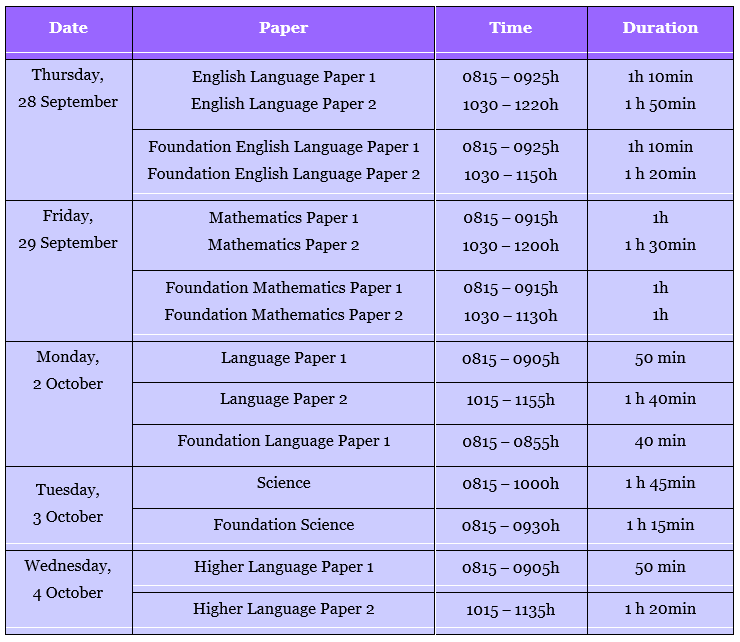Part 4 of series
Biology is an amazing field that never ceases to fascinate and amaze us with its amazing discoveries. From microscopic organisms to giant creatures, biology explores life’s intricate workings. In this final blog series of five experiments, we’ll be delving deeper into biology with exciting science activities designed to pique your child’s curiosity and ignite their love of learning!
Table of contents
- The Egg in Vinegar Experiment: Witnessing the Bouncy Egg
- Discovering Decomposition Through Mouldy Bread Experiment
- The Photosynthesis Experiment: Discovering Plant Magic
- The Decomposition Experiment: Discovering Nature’s Magic
- The Germination Experiment: Planting Life
The Egg in Vinegar Experiment: Witnessing the Bouncy Egg
Have you ever heard of the egg in vinegar experiment? This seemingly magical process transforms an ordinary egg into a rubbery ball that defies gravity – but it all comes down to simple science! In this article we’ll look into this fascinating science experiment and uncover its secret: osmosis!
What is the Egg in Vinegar Experiment?
This science experiment involves placing an egg inside a jar filled with vinegar. As the vinegar breaks down the eggshell, its contents ooze out and react with the acidic vinegar. You’ll end up with an adorable bouncy egg that you can play with or show off to friends!
Materials Needed
In order to conduct the egg in vinegar experiment, you will need the following materials:
- A clear jar or glass
- White vinegar
- An egg
- A spoon
- A plate
The experiment itself will take around 45 minutes.
Follow these simple steps to perform the egg in vinegar experiment:
- Pour enough white vinegar into a jar or glass so that the egg is fully submerged.
- Gently place the egg into the vinegar, making sure it’s fully submerged.
- Use a spoon to gently move the egg around so that all of its surface is covered in vinegar.
- Cover the jar or glass with a plate and leave for 24-48 hours.
- After this period has elapsed, carefully remove the egg from its liquid environment and rinse it gently with water.
- Enjoy playing and observing with your new-found friend!
How Does it Work?
The egg in vinegar experiment works through the principle of osmosis. Osmosis is the movement of water from an area with high concentration to one with low concentration through a semipermeable membrane, such as an eggshell. In this instance, vinegar breaks down that semipermeable membrane and allows water from the vinegar solution into the egg.
Water seeping into an egg causes it to expand, making it larger in size due to permeability – water can now pass through it. Acidic vinegar also reacts with calcium carbonate present in the shell, breaking it down and releasing carbon dioxide gas.
Finally, the egg becomes so swollen that its membrane can no longer contain the liquid inside. As a result, it becomes rubbery and bouncy! What an exciting way to demonstrate osmosis and chemical reactions!
Why is this experiment super cool?
The egg in vinegar experiment is super cool for several reasons. Firstly, it’s an easy experiment that can be done at home with minimal materials. Secondly, it provides a fun and engaging way for kids to learn science concepts through play. Finally, its visually stunning results create a bouncy egg which can be used for games or activities – truly making this experiment both entertaining and practical!
FAQs regarding this fascinating experiment
- How long does it take for an egg to become bouncy?
On average, 24-48 hours.
- Can I use any type of vinegar in this experiment?
Absolutely.
Discovering Decomposition Through Mouldy Bread Experiment
Have you ever pondered why bread gets mouldy? The mouldy bread experiment is an engaging and educational way to explore this fascinating process of decomposition. With only a few materials, you can observe mould growth on a piece of bread while learning about the science behind it.
What is the Mouldy Bread Experiment?
This science experiment requires placing a piece of bread into a plastic bag and leaving it for several days. As it decomposes, you can observe mould growing on its surface. Plus, since this experiment is safe and non-toxic, you don’t need to worry about any possible risks during observation.
Supplies Needed
To conduct the mouldy bread experiment, you will need the following materials:
- A slice of bread
- A plastic bag
- String or rubber band
Procedure
Follow these simple steps to conduct the mouldy bread experiment:
- Place a slice of bread into a plastic bag.
- Tie it shut with string or rubber band.
- Keep the bag in an area that’s warm and dark for several days.
- Inspect the bread daily to detect any changes.
How Does it Work?
The mouldy bread experiment works through decomposition. Decomposition involves the breakdown of organic matter by bacteria and fungi, which consume its nutrients to produce waste products. In the case of bread, those nutrients are carbohydrates and sugars which the bacteria and fungi feed on.
Placing bread in a plastic bag creates an ideal breeding ground for bacteria and fungi, creating an ideal environment that fosters their growth. As the bread begins to decompose, you’ll likely notice mould on its surface as these organisms break down nutrients from the loaf and produce waste products – visible as mould and an unpleasant odour.
Why is the mouldy bread experiment fascinating?
The mouldy bread experiment is captivating for several reasons. Firstly, it demonstrates decomposition – essential for recycling nutrients back into the ecosystem – and shows how bacteria and fungi play an integral role in breaking down organic matter to release essential nutrients back into the environment. Thirdly, it emphasizes the necessity of hygiene and food preservation to prevent harmful bacteria or fungi growth. And lastly, it’s a fun and easy experiment anyone can do at home with minimal materials.
FAQs
- Is the mouldy bread experiment safe and non-toxic?
Yes, the mouldy bread experiment is completely safe and non-toxic. Nonetheless, it’s essential to practice good hygiene and food preservation in order to prevent the growth of harmful bacteria and fungi.
- Can I Use Any Type of Bread for This Experiment?
Absolutely, you can use any type of bread for this experiment. However, white bread is recommended since it has more sugar which encourages bacteria and fungi growth.
- How Long Does It Take Before the Bread Starts Growing Mouldy?
According to climate and humidity conditions, bread may begin to develop mould within a few days.
The Photosynthesis Experiment: Discovering Plant Magic
Plants are amazing creatures that use sunlight to convert energy through photosynthesis. But how does this process work? The photosynthesis experiment offers an easy and thrilling way to witness this natural process and learn about its science behind photosynthesis.
What is the Photosynthesis Experiment?
The photosynthesis experiment is a science experiment that involves placing a small plant inside a plastic bag filled with water and leaving it out in the sun for several hours. This plant releases water through photosynthesis, causing the bag to fog up – just like your very own mini greenhouse where you can witness photosynthesis firsthand!
Materials Needed
A mini greenhouse setup is all that’s necessary!
To conduct the photosynthesis experiment, you will need the following materials:
- A small plant with leaves
- A plastic bag
- Water.
The procedure to be followed for this experiment can be found below.
Follow these easy steps to conduct the photosynthesis experiment:
- Start by placing a small plant inside a plastic bag.
- Add just enough water into the bag so that there is just enough moisture at the bottom, covering any dirt.
- Seal the bag securely, making sure there’s some air trapped inside.
- Place the bag in a sunny location and leave for several hours.
- Check the bag after some time has elapsed to observe any changes.
How does photosynthesis work?
Photosynthesis is the process by which plants utilize sunlight to create energy. During photosynthesis, plants absorb light energy from the sun and transform carbon dioxide and water into oxygen and glucose.
Placing plants in plastic bags filled with water creates a closed environment where the water released during photosynthesis is trapped. As the plants absorb light energy from the sun, they create energy and release water vapour as waste products. Unfortunately, this vapour gets trapped within the bag, causing it to fog up.
Why is photosynthesis experiment magical?
The photosynthesis experiment is remarkable for several reasons. Firstly, it showcases plants’ incredible capacity to generate energy from sunlight – an incredibly important process for life on Earth. Secondly, it demonstrates how plants release oxygen that’s necessary for all living things including humans. Thirdly, it emphasizes the significance of light, water and carbon dioxide for plant growth and development. Plus, this fun and easy experiment can easily be done at home with minimal materials required.
FAQs
- Can I use any type of plant for this experiment?
Yes, you can use any type of plant with leaves for this experiment.
- Do I need to water the plant before placing it in the bag?
Yes, watering your plant before packing will ensure that it stays healthy and hydrated inside of the bag.
- How long should I leave my experiment in?
You should leave the plant in its bag for several hours, depending on how much sunlight and humidity there is in its environment.
The Decomposition Experiment: Discovering Nature’s Magic
Ever wondered how organic matter breaks down in nature? The decomposition experiment offers a simple and exciting way to uncover this process and gain an understanding of decomposition. Using only basic materials, you can observe organic matter being broken down by microorganisms as part of their natural cycle.
What is the Decomposition Experiment?
This science experiment involves placing some produce in a jar, covering them with soil, and waiting for several days. As microorganisms in the soil break down organic matter, you’ll have an amazing outcome – like having your very own miniature compost bin to witness decomposition firsthand!
Materials Needed
To get started on your decomposition experiment: some fruit or vegetables; soil; time.
Decomposition takes place over several days as you observe each step along the way.
To conduct the decomposition experiment, you will need the following materials:
- Fruit or vegetables
- Soil
- A jar or container with a lid
Procedure
Follow these easy steps to conduct the decomposition experiment:
- Begin by placing fruit or vegetables in a jar or container.
- Cover them completely with soil, making sure all areas are covered.
- Close the lid and leave in a warm and dark place for several days.
- Check the jar after several days and note any changes that take place.
How Does Decomposition Work?
The decomposition experiment works through decomposition, or the breakdown of organic matter by microorganisms like bacteria and fungi. These microbes consume nutrients present in organic matter to produce waste products which can be observed as changes to texture, colour, or odour.
By placing fruits or vegetables in a jar with soil, you create an enclosed environment for microorganisms to thrive. As these organisms consume the nutrients found in organic matter, they produce waste products like carbon dioxide, water and humus. Decomposition of organic matter is necessary for recycling nutrients back into the ecosystem and maintaining soil fertility.
Why is the decomposition experiment fascinating?
The decomposition experiment is captivating for several reasons. Firstly, it demonstrates the essential process of decomposition that helps recycle nutrients back into the ecosystem. Second, microorganisms play a significant role in breaking down organic matter and releasing essential nutrients back into the environment. Thirdly, it emphasizes the significance of soil fertility and maintaining healthy ecosystems.
FAQs
- Can I use any type of fruit or vegetable for this experiment?
Absolutely. Any fruit or vegetable will work just as well.
- Do I Need to Water the Soil?
No, you do not need to water the soil – moisture from your fruits/vegetables will suffice.
- How long should I leave the jar in a warm and dark place?
For best results, keep it there for several days depending on the type of organic matter present and the temperature of the environment.
The Germination Experiment: Planting Life

Plants are fascinating creatures that give our planet life. With this simple experiment, you can witness the power of plants and learn about the process of germination. With only minimal materials needed, this activity is suitable for both kids and adults alike.
What is the Germination Experiment?
Germination experiment involves placing bean seeds on wet paper towel, folding it and sealing it inside a plastic bag. By leaving this in a warm, sunny location for several days, you can observe how water absorbs into the seed to form a plant.
Materials Needed
Begin your experiment now by gathering all necessary materials!
For this germination experiment, you will need the following materials:
- Bean seeds
- Paper towels
- Plastic bag
Procedure
Follow these simple steps to conduct the germination experiment:
- Place some bean seeds onto a wet paper towel.
- Fold the towel over so the seeds are covered completely.
- Seal up the paper towel in plastic by placing it inside an airtight bag.
- Seal the bag and leave it in a warm, sunny spot for several days.
- Examine the bag after some time has passed to observe any changes.
How Does Germination Work?
Germination is the process by which a seed transforms from being an embryo into a plant. During germination, water absorbs into the seed and activates enzymes that break down stored food to allow the embryo to take root and develop.
Placing bean seeds on wet paper towel and placing them in a plastic bag creates an ideal climate for germination. As the seeds absorb water, enzymes break down stored food to form plants; you can watch as your seed sprouts and develops into something beautiful!
Why is the Germination Experiment Exciting?
Germination experiments are exciting for several reasons. First, they demonstrate the remarkable capacity of plants to grow and develop from a single seed, second, they emphasize how important water and sunlight are for plant health, thirdly they show us nature’s intricate beauty. And lastly but certainly not least it’s an enjoyable experiment anyone can do at home with minimal materials – all it requires is some curiosity!
FAQs
- Can I use any type of seed for this experiment?
Yes, you can use any type of seed for this experiment. Bean seeds are particularly popular as they germinate quickly and provide easy observation.
- How long does it take for the seeds to sprout?
Seeds may take a few days to sprout, depending on the type of seeds and the temperature and humidity level in their environment.
- Do I Need to Water the Paper Towel Every Day?
No, you do not need to water your paper towel daily. A light wetting of the towel should be enough for seeds to absorb water and begin sprouting.




















